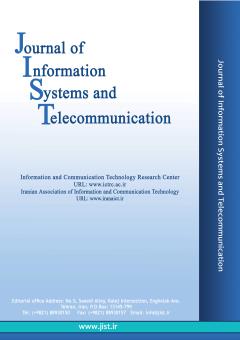An Autoencoder based Emotional Stress State Detection Approach by using Electroencephalography Signals
Subject Areas : Signal Processing
1 - AI and Big Data Department, Endicott College, Woosong University, Daejeon, South Korea
Keywords: EEG Signals, emotion analysis, stress analysis, autoencoder, machine learning, deep learning.,
Abstract :
Identifying hazards from human error is critical for industrial safety since dangerous and reckless industrial worker actions, as well as a lack of measures, are directly accountable for human-caused problems. Lack of sleep, poor nutrition, physical deformities, and weariness are some of the key factors that contribute to these risky and reckless behaviors that might put a person in a perilous scenario. This scenario causes discomfort, worry, despair, cardiovascular disease, a rapid heart rate, and a slew of other undesirable outcomes. As a result, it would be advantageous to recognize people's mental states in the future in order to provide better care for them. Researchers have been studying electroencephalogram (EEG) signals to determine a person's stress level at work in recent years. A full feature analysis from domains is necessary to develop a successful machine learning model using electroencephalogram (EEG) inputs. By analyzing EEG data, a time-frequency based hybrid bag of features is designed in this research to determine human stress dependent on their sex. This collection of characteristics includes features from two types of assessments: time-domain statistical analysis and frequency-domain wavelet-based feature assessment. The suggested two layered autoencoder based neural networks (AENN) are then used to identify the stress level using a hybrid bag of features. The experiment uses the DEAP dataset, which is freely available. The proposed method has a male accuracy of 77.09% and a female accuracy of 80.93%.
[1] R. E. Bender, and L. B. Alloy, “Life stress and kindling in bipolar disorder: review of the evidence and integration with emerging biopsychosocial theories”, Clinical psychology review, Vol. 31, No. 3, 2011, pp. 383–398.
[2] T. G. Pickering, “Mental stress as a causal factor in the development of hypertension and cardiovascular disease”, Current hypertension reports, Vol. 3, No. 3, 2001, pp. 249–254.
[3] T. C. Major, and J. M. Conrad, “A survey of brain computer interfaces and their applications”, in IEEE SOUTHEASTCON 2014, 2014, pp. 1–8.
[4] N. Elsayed, Z. S. Zaghloul, and M. Bayoumi, “Brain computer interface: EEG signal preprocessing issues and solutions”, Int. J. Comput. Appl, Vol. 169, No. 3, 2017, pp. 12–16.
[5] R. E. Wheeler, R. J. Davidson, and A. J. Tomarken, “Frontal brain asymmetry and emotional reactivity: A biological substrate of affective style”, Psychophysiology, Vol. 30, No. 1, 1993, pp. 82–89.
[6] A. C. Atencio et al., “Computing stress-related emotional state via frontal cortex asymmetry to be applied in passive-ssBCI”, in 5th ISSNIP-IEEE Biosignals and Biorobotics Conference: Biosignals and Robotics for Better and Safer Living (BRC), 2014, pp. 1–6.
[7] F.P. George et al. “Recognition of emotional states using EEG signals based on time-frequency analysis and SVM classifier”, International Journal of Electrical and Computer Engineering, Vol. 9, No. 2, 2019, pp. 1012-1020.
[8] T. F. Bastos-filho, A. Ferreira, A.C. Atencio, S. Arjunan, and D. Kumar, “Evaluation of Feature Extraction Techniques in Emotional State Recognition”, in 4th International conference on intelligent human computer interaction (IHCI), 2012, pp. 1-6.
[9] N. Jatupaiboon, S. Pan-ngum, and P. Israsena, “Real-time EEG-based happiness detection system”, The Scientific World Journal, 2013, pp. 1-12.
[10] M. J. Hasan, and J. M. Kim, “A hybrid feature pool-based emotional stress state detection algorithm using EEG signals”, Brain sciences, 2019, Vol. 9, No. 12, pp. 1-15.
[11] D. Shon, K. Im, J. Park, D. Lim, B. Jang, and J. Kim, “Emotional Stress State Detection Using Genetic Algorithm-Based Feature Selection on EEG Signals”, Int. J. of environmental research and public health, 2018, Vol. 15, No. 11, pp. 1-11.
[12] S. Koelstra, C. Muhl, M. Soleymani, J.S. Lee, A. Yazdani, T. Ebrahimi, T. Pun, A. Nijholt, and I. Patras, “Deap: A database for emotion analysis; using physiological signals”, IEEE transactions on affective computing, 2011, Vol. 3, No. 1, pp.18-31.
[13] Y. P. Lin, C. H. Wang, T. P. Jung, T. L. Wu, S. K. Jeng, J. R. Duann, and J. H. Chen, “EEG-based emotion recognition in music listening”, IEEE Transactions on Biomedical Engineering, 2010, Vol 57, No. 7, pp. 1798-1806.
[14] R. Jenke, A. Peer, and M. Buss, “Feature extraction and selection for emotion recognition from EEG”, IEEE Transactions on Affective Computing, 2014, Vol. 5, No. 3, pp. 327-39.
[15] M. Sohaib, C.-H. Kim, and J.-M. Kim, “A Hybrid Feature Model and Deep-Learning-Based Bearing Fault Diagnosis”, Sensors, 2017, Vol. 17, No. 12, pp. 1-16.
[16] J. A. Russell, “A circumplex model of affect”, Journal of Personality and Social Psychology, 1980, Vol. 39, No. 6, pp. 1161–1178.
[17] S.H. Oh, Y.R. Lee, and H.N. Kim, “A novel EEG feature extraction method using Hjorth parameter”, Int. Journal of Electronics and Electrical Engineering, 2014, Vol. 2, No. 2, pp. 106-110.
[18] P.C. Petrantonakis, and L.J. Hadjileontiadis, “Emotion Recognition from EEG Using Higher Order Crossings”, IEEE Transactions on Information Technology in Biomedicine, 2010, Vol. 14, No. 2, pp. 186–197.
[19] H. Shao, H. Jiang, H. Zhao, and F. Wang, “A novel deep autoencoder feature learning method for rotating machinery fault diagnosis”, Mechanical Systems and Signal Processing, 2017, Vol. 95, pp. 187-204.


